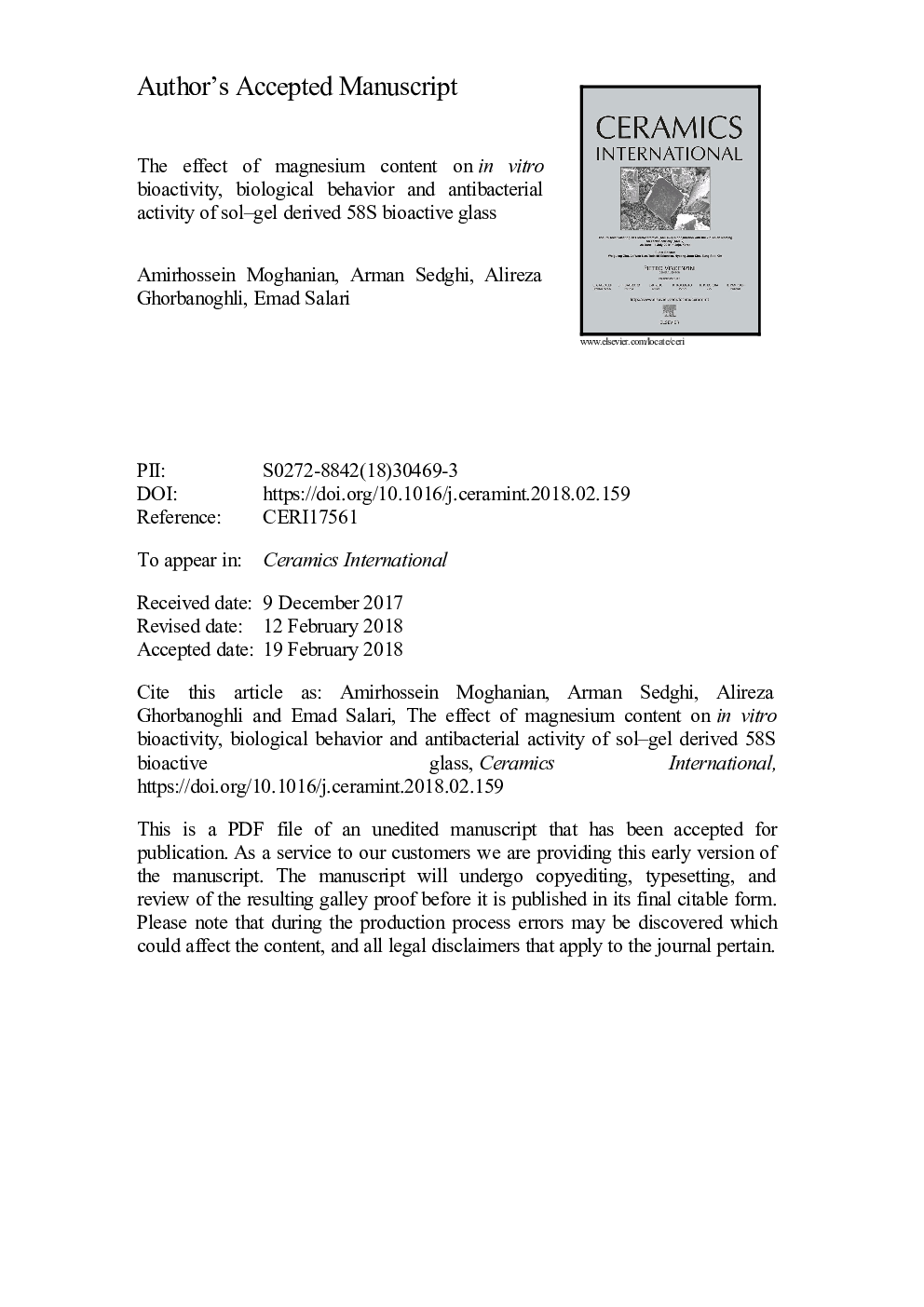| Article ID | Journal | Published Year | Pages | File Type |
|---|---|---|---|---|
| 7887897 | Ceramics International | 2018 | 52 Pages |
Abstract
Results revealed that magnesium-substituted 58â¯S BG with 5â¯mol% MgO (BG-5) had the highest formation rate of hydroxyapatite (HA) while substitution of 8â¯mol% and10 mol% MgO (BG-8 and BG-10) lowered the bioactivity. MTT and ALP results confirmed that the substitution of the MgO up to 5â¯mol% increased both proliferation and differentiation of MC3T3-E1 cells, while more substitution had a negative effect and resulted in a decrease of proliferation and differentiation in BG-8 and BG-10. The result of antibacterial test showed that MBGs exhibited antibacterial effect against methicillin-resistant Staphylococcus aureus (MRSA) bacteria. Taken together, results suggest that, among all the synthesized MBGs, sample BG-5 is a promising candidate as multifunctional biomaterial for bone tissue engineering with maximum cell proliferation and ALP activity, good bioactivity and high antibacterial efficiency against MRSA bacteria. Eventually, the BG-5 is suggested to be used in segmental defects in rat model in vivo.
Related Topics
Physical Sciences and Engineering
Materials Science
Ceramics and Composites
Authors
Amirhossein Moghanian, Arman Sedghi, Alireza Ghorbanoghli, Emad Salari,
